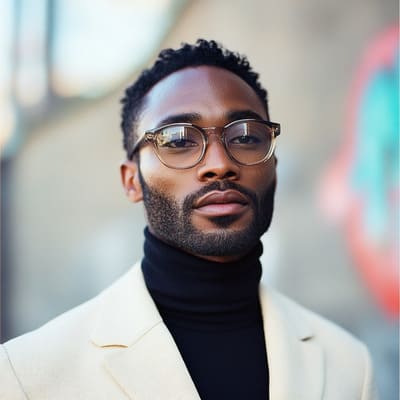Fashion Campaigns That Broke Stereotypes
>
The fashion industry has always been known for pushing boundaries and setting new trends. However, one aspect that has unfortunately been slow to change is the perpetuation of stereotypes in fashion campaigns. That is, until now. In recent years, we have seen a shift towards promoting inclusivity, diversity, and breaking down societal norms in the fashion world. Brands are finally beginning to acknowledge the importance of representation and using their platforms to send out powerful messages. In this article, we will take a look at some of the fashion campaigns that have successfully broken stereotypes and paved the way for a more inclusive and diverse industry.
The Ageless Beauty
In an industry that has long been obsessed with youth and idealized notions of beauty, many campaigns have been guilty of neglecting older demographics. However, in 2019, luxury fashion brand Saint Laurent shattered this stereotype with their Fall/Winter campaign. The campaign featured 73-year-old British actress and model, Charlotte Rampling, in a series of stunning black and white photographs. With her striking features and timeless elegance, Rampling proved that beauty knows no age limit.
Redefining Gender Roles
Gone are the days when fashion campaigns were solely targeted towards one gender. Many brands have recognized the need to break gender stereotypes and have embraced gender fluidity in their marketing efforts. One such example is H&M’s “Close the Loop” campaign, which featured a diverse cast of models of all ages, sizes, and ethnicities, including individuals who do not conform to traditional gender norms. This powerful message of inclusivity and acceptance sparked much-needed conversation and set an example for other brands to follow.
Challenging Beauty Standards
The fashion industry has long been criticized for its narrow view of beauty, often promoting unrealistic and unattainable standards. However, some brands have taken a stand against these toxic norms and have chosen to showcase real beauty in all its forms. One of the most memorable campaigns in this regard is Dove’s “Real Beauty” campaign, which featured women of all shapes, sizes, and ages, unedited and unfiltered. By celebrating the natural beauty of everyday women, Dove successfully challenged conventional standards of beauty and started a movement that continues to inspire other brands.
Breaking Down Barriers
In addition to promoting body positivity and inclusivity, many fashion campaigns have also aimed to break down societal barriers and challenge stereotypes based on race, ethnicity, and nationality. One brand that consistently takes a stand against such stereotypes is Nike. Their campaigns have featured athletes from diverse backgrounds, breaking the stereotype that only certain body types or races are capable of excelling in sports. By showcasing real individuals and their stories, Nike has successfully shattered stereotypes and promoted inclusivity and diversity.
The Power of Representation
Perhaps the most significant impact that fashion campaigns can have is the power of representation. Seeing individuals who look like us, or who break societal norms, can have a profound effect on our self-esteem and sense of belonging. In 2016, Burberry made history by casting a hijab-wearing model, Mariah Idrissi, in one of their campaigns. This small but significant step towards representation in the fashion industry sent a powerful message to Muslim women worldwide and challenged stereotypes about their dress and appearance.
In Conclusion
Fashion campaigns have a powerful influence on society, and it is heartening to see that many brands are using this influence to break stereotypes and promote inclusivity and diversity. By showcasing individuals from all walks of life, regardless of age, size, race, or gender, these campaigns are paving the way for a more inclusive and accepting fashion industry. While there is still a long way to go, these campaigns give us hope for a future where diversity is not just a trend but a norm.








